Hometown of Huang Di
Hometown of Huang Di
The scenic spot of Huangdi's hometown is located in Xuanyuan Road, Xinzheng City, Zhengzhou City, Henan Province. It is the residence of Xiong clan recorded in the history books of Han Dynasty, so there is the ruins of Xiong State. It is a national AAAA-level tourist attraction, a patriotic education base of the Chinese Federation of Overseas Chinese , and a heritage site of the national intangible cultural heritage "the grand ceremony of worshiping ancestors in the hometown of the Yellow Emperor".
In the Han Dynasty, Xuanyuan Temple was built here. History was destroyed and repaired. In the fourth year of Longqing in the Ming Dynasty (1570), Xu Chaoshu, the governor of Xinzheng County in the fifty-fourth year of Kangxi in the Qing Dynasty (1715), erected the monument of Xuanyuan's hometown in front of the temple. Later, it was expanded twice in 2002 and 2007 to form the present Huangdi's hometown scenic spot.
Huangdi's hometown is a sacred place for the descendants of Yanhuang both at home and abroad to seek their roots and worship their ancestors. On September 25, 2000, Xuanyuan Temple (including Xuanyuan's hometown) was announced as the third batch of key cultural relics protection units in Henan Province. In June 2006, the Henan Provincial Tourism Scenic Area Quality Grading Committee announced it as a national AAAA-level tourist attraction. On June 7, 2008, "Baizu Grand Ceremony of Huangdi's Hometown" was listed in the first batch of national intangible cultural heritage expansion projects.
The scenic spot of Huangdi's hometown is one of the sacred places for worshiping ancestors of the descendants of Yanhuang both at home and abroad. Some contemporary cultural scholars and experts advocate that Xuanyuan Huangdi's birthday and Shangsi Festival should be established as "Chinese Christmas" and appeal to all Chinese children to commemorate the ancestor of humanity, Xuanyuan Huangdi, on March 3 of the lunar calendar. According to the 13th Five-Year Tourism Development Plan of Xinzheng City (2016-2020), Huangdi's hometown was built into a national 5A-level scenic spot during the 13th Five-Year Plan period.
Historical evolution
Xinzheng City, Zhengzhou City, Henan Province, was a country with bears in ancient times. Five thousand years ago, Xuanyuan Huangdi was born in Xuanyuan Qiu of Beiguan, Xinzheng City. He grew up on the Bank of Jishui River. In the first year of his reign, he occupied the position of bears and was first crowned. Leading the ancestors to create a brilliant Chinese civilization and laid the foundation of the Chinese nation.
In the Han Dynasty, to commemorate the merits of the Yellow Emperor, people built Xuanyuan Temple on Xuanyuan Hill, which has been repaired in successive dynasties.
In the Ming Dynasty, in 1570, the Xuanyuan Bridge was built in front of the ancestral temple.
In the Qing Dynasty, in the fifty-fourth year of Kangxi (1715), Xu Chaozhu, commander of Xinzheng County, stood in front of the ancestral temple as a "milestone in Xuanyuan's hometown". Qianlong 29 years (1764) repair. "Repairing the Hall Records" describes: "The ancient Zhengyi is Xuanyuan's old ruins, walking in the north there are Xuanyuan Qiu ruins, is the site of that year. In order to carry forward the excellent traditional culture of the Chinese nation and cherish the memory of the ancestors'merits and virtues.
Since the 1990s, Xinzheng City has been renovating and expanding Huangdi's hometown many times. The area of the scenic spot has reached more than 70,000 square meters. The overall layout highlights the theme of "the root of the Chinese nation". From north to south, there are Baizu District, Temple District and Chinese Family Square District, which constitute the three major plates of "Heaven, Earth and Man".
On September 25, 2000, Xuanyuan Temple (including the historical landmark of Xuanyuan) was announced as the third batch of key cultural relics protection units in Henan Province.
On April 6, 2002, the Huangdi Cultural Scenic Spot in Shizushan, Xinzheng, was named "the first patriotic education base of the Chinese Federation of Overseas Chinese".
In June 2006, Henan Provincial Tourism Scenic Area Quality Grade Evaluation Committee announced as the national AAAA-level tourist attractions.
In 2007, it was listed as the base of patriotism education in Zhengzhou.
On June 7, 2008, "Baizu Grand Ceremony of Huangdi's Hometown" was listed in the first batch of national intangible cultural heritage expansion projects. In 2008, the Tourist Reception Center was named the National Demonstration Gang of Towel Civilization.
In 2010, it was named Henan Patriotic Education Base.
In 2012, it was named the pilot unit of national service standardization.
Main landscape
Huangdi's Hometown Scenic Spot
Huangdi's hometown is the birthplace, entrepreneurship and capital of Xuanyuan Huangdi, the ancestor of Chinese culture. It is recorded in the historical books of the Warring States Period and the Han Dynasty. The Xuanyuan Temple was built in the Han Dynasty and built over and over again. In the fourth year of the Ming Dynasty, Xuanyuan Bridge was built in front of the temple. In the fifty-fourth year of the Qing Dynasty, Xu Chaozhu, commander of Xinzheng County, erected the monument "Xuanyuan Hometown" in front of the temple. Since the 1990s, Huangdi's hometown has been expanded many times. The area of the scenic spot has reached 70,000 square meters. The overall layout highlights the theme of "the root of China". From north to south, Xuanyuanqiu's ancestor worship area, temple area and Chinese surname square area are successively divided into three parts, namely "Heaven, Earth and Man". They are magnificent and solemn.
After the expansion in 2007, the scenic spot of Huangdi's hometown is divided into five areas: the square of Chinese surname, the front area of Xuanyuan Temple, Xuanyuan Temple, Baizu Square, Xuanyuan Qiu and Huangdi Memorial Hall.
Chinese Surname Square
Originally known as Xuanyuan Square, the square in front of the gate of Huangdi's hometown scenic spot is located in the old urban area, and its shape is not square or round, and the road crosses obliquely. In 2008, according to experts'suggestions, Xuanyuan Square was renamed "China Name Square". Its area was expanded from 7,000 square meters to 15,000 square meters. Dingtan Plaza in the scenic area was moved to Baijiaxing Square and placed one third south of the Plaza. The Dingtan Plaza is 9 meters high, the base is 35 meters and the surface of the Plaza is 21 meters. It is divided into three levels and 15 steps. The floor of the Plaza around the Dingtan is engraved with carvings. There are more than 4600 surnames in China, and there are abstract auspicious cloud patterns scattered in the square, which means "stepping on auspicious clouds, watching hundreds of surnames, singing harmony songs, and imagining the future of the nation's soaring". The largest surname square in Asia will become the main place for people to worship their ancestors. At the ceremony, the people of the square array with Hundred Surnames will worship their ancestors in the costume of the surname sign. Located in the center of the square, Huangdi Baoding is 6.99 meters high, 4.7 meters in diameter, 2.8 meters in abdominal depth, 1.5 meters in ear height, 2.8 meters in foot height, 24 tons in weight, and the tripod foot is a bear foot. Xuanyuan Huangdi has Xiong's family. The tripod is decorated with Jiulong, the headpiece of Yanyang Fireball, the pouring water pattern, praying for a smooth wind and rain, symbolizing the unity and stability of the motherland. Modeling solemn, dignified, atmosphere, known as "the world's first tripod".
A total of 960 living fossil metasequoias have been planted around the Chinese surname square, which symbolizes 9.6 million square kilometers of land in China. As the saying goes: all surnames have the same roots, rooted in the ancestors. The Chinese nation is like a big tree, and every descendant of the Yellow Emperor is like the spring and autumn fruits of a tree. So no matter where we go, please don't forget which branch and leaf you are. That's why we built this square with Chinese surname.
At the "2009 National Cultural Square Awards Conference" and the "Third National Square Cultural Forum", Xinzheng Chinese Square was awarded the honorary title of "National Cultural Square" to show the long history of Chinese surnames.
Xuanyuan Bridge
Xuanyuan Bridge is an important part of Xuanyuan Temple. It was built in front of the ancestral temple by ancient people to pay homage to Xuanyuan Huangdi. The original bridge was built in 1570 A.D., the Four Years of Longqing in the Ming Dynasty. On the east side of the bridge, there are three words of Yin-engraved seal inscription "Xuanyuan Bridge". On the west side of the ancient brick, there are inscriptions of "Wang Zhong, a brickmaker in Xuzhou". Due to dynastic changes, historical changes and topographic changes, the bridge was buried underground for many years. In March 2002, Xinzheng City decided to restore the view of Xuanyuan Bridge, which coincided with the site of the old bridge when excavating the foundation of the new bridge. The newly built Xuanyuan Bridge, 12 meters long, beautiful and elegant, such as Changlong Wobo, spans the Jishui River.
Xuanyuan Temple
Xuanyuan Temple is the oldest building and the core part of the whole Huangdi's hometown scenic spot. In the Han Dynasty, the ancestral hall was built and repaired in the Ming and Qing Dynasties. There are the main hall, the East-West matching hall and the ancestral vestibule. In 2000, it was declared as the key cultural relics protection unit in Henan Province.
Xuanyuan Temple is located in front of Xuanyuan Hill in Xinzheng City. The buildings of Han Dynasty were mostly destroyed and rebuilt in Ming and Qing Dynasties. There were halls, East and West chambers and front doors. In the Qing Dynasty, Xu Chaozhu, the county commander of Kangxi in 54 years, erected a monument in front of the ancestral temple, "Xuanyuan Hometown". Qing Qianlong 41 years "Xinzheng County Zhi Jinshi Zhi": "National Dynasty, Xuanyuan old milestone, the tablet outside the North Gate, Kangxi 54 Yiling Xu Dynasty pillar. (Volume 39) Qing Dynasty, Daoguang 17 years "Lin Zexu Diary" records: this year Lin Zexu was appointed Governor of Huguang, Lunar calendar February 20, through Xinzheng, accompanied by Shimu of Zhengzhou and Ling Li Jiali of Xinzheng County, to the north of the county Guan Xuanyuan Temple to pay homage to the Yellow Emperor. After the founding of the People's Republic of China, the Great Leap Forward Temple was destroyed in 1958, and Xu Chaozhu's "Xuanyuan Hometown" monument was destroyed. After 1990, the people's government of Xinzheng County renovated it and was declared the key cultural relics protection unit of Henan Province .
In the five main halls of Xuanyuan Temple, the central government worships the statue of Xuanyuan Huangdi's middle-aged pension body. The flat forehead of the first ancestor of humanity is the inscription of Cheng Siyuan, vice chairman of the National People's Congress. The murals around the hall vividly show the great achievements of the emperor's life. There are three palaces in the East and three in the west. The East Palace sculpts the ancestor of Huangdi Yuanfei -- "Xiansilkworm Niang" and the West Palace sculpts the second imperial concubine of Huangdi -- "Xianzhiniang".
The ancestral hall has three vestibules to show the cultural relics of Peiligang, Yangshao and Longshan periods in Xinzheng. In the temple courtyard, there are "Lin Zexu worship ancestor monuments" and "World Hakka Association worship ancestor monuments" and so on.
The statue of Emperor Xuanyuan, the ancestor of Chinese culture, was completed on April 10, 2005. This white jade statue of the Han Dynasty is the front sitting statue of the Yellow Emperor holding a sword. Like 5.19 meters high, to show the "Ninth Five-Year Honour".
Xuanyuanqiu District "Sheng": Xuanyuanqiu is 19 meters high and 100 meters long. There is Xuanyuan Palace, the first palace in China, built in the hill. It is a earth-covered building with underground caves, implying the birthplace of Huangdi. "Interest" in Huangdi Cultural and Art Park: There are rich and colorful exhibitions of Huangdi's culture and art.
Huangdi Baoding Temple District
Located behind Xuanyuan Temple, Baoding Temple District of Huangdi is 150 meters long in North and south, 150 meters in East and west, covering an area of about 225,000 square meters. It consists of Qingshi Yongdao inscription, national totem pole, Huangdi Baoding Temple and couplet corridor. Qingshi Yongdao inscription has a history of nearly ten thousand years from Fuxi, Shennong and Huangdi to the 21st century. It contains historical facts about the birth of Huangdi in Xinzheng, Henan Province, and the establishment of capital.
"Hakka footprints" are engraved on both sides of Yongdao inscription. National totem pillars stand on both sides of the Qingshi Yongdao, with white marble from the Han Dynasty, 10 sides, 3.6 meters high and 6 edges, engraved with totems or national emblems of 56 nationalities of the Chinese nation. Huangdi Baoding Temple is one of the landmark buildings in Huangdi's hometown scenic spot. Its foundation is square, representing one of the Eight Diagrams "Kun", with a side length of 50 meters. The top of the altar is round, representing "dry". The altar is 5 meters high, representing the "Five Soils", namely mountains, forests, rivers, hills, waterside, depressions and so on, symbolizing the earth, mountains and rivers. The number of steps of Dingtan is 3699, and the first platform is three steps, which is the right way. The second platform consists of six steps, including Yin, Yang, Wind, Rain, Obscurity and Ming in the Eight Diagrams. The third platform and the fourth platform are 9 steps each, totaling 99, which is the supreme. Dingtan is surrounded by bluestone pavement, which implies the vastness of the earth and the harmony of nature. Nine tripods stand on the altar, and Huangdi Baoding stands in the position of the Zhonggong. The bronze casting is 6.99 meters high, 4.7 meters in diameter and 24 tons in weight. Three dragons are engraved on each side of the tripod, one of which is a giant dragon in the middle. Looking back, the head of the dragon is like a fireball. It contains the jewel of the Yellow Emperor, which symbolizes light; the saliva pattern of the dragon's mouth symbolizes smooth weather; the tripod is a standing bear, implying that the country has a bear. This tripod is the first treasure tripod in China.
Xinzheng is the source of the tripod ware. The earliest tripod ware in China came from the Peiligang site of Xinzheng eight or nine thousand years ago. Five thousand years ago, Emperor Xuanyuan of Xinzheng first made pottery cookers into bronze tripod rituals. Huangdi Baoding is 5.66 meters higher than the largest existing Shang Dynasty Simu Wuding, weighing 23.6 tons, 0.39 meters higher than Zhaoqing bronze tripod, which has entered the world Guinness record, and weighs 8 tons. Ding is the symbol of material civilization, political civilization and spiritual civilization. The remaining eight tripods, four square and four circles, with a height of 1.25 meters and animal face decoration, are named as officials, wisdom, abundance, love, Ann, heirs, longevity and wealth respectively. They are surrounded by the Yellow Emperor's treasure tripod in the position of Eight Diagrams. Located on the East and west sides of Huangdi Baoding Tan District, the couplet corridor is 150 meters long and 5 meters wide, with 200 couplets. It displays the handwriting of celebrities, praises Huangdi's achievements and hearts. Most of them are excellent calligraphy works.
Han Dynasty
The gate of the scenic spot of Huangdi's hometown is Hanque. Que is the oldest door. The imperfect are the buildings in front of ancient palaces, ancestral temples and mausoleums. This Han Que is shaped like a waist-shaped son and mother Que. The mother is a heavy building, the upper is a heavy eaves, 17.08 meters high, and the net distance between East and West is 24 meters.
Xuanyuanqiu and Huangdi Memorial Area
Xuanyuanqiu and Huangdi Memorial Hall are located in the north of Huangdi Baoding Temple, covering an area of about 10,000 square meters. The old site of Xuanyuanqiu was destroyed in the late Qing Dynasty and is now symbolically restored. The hill is 19 meters high and 100 meters in diameter. The Huangdi Memorial Hall is located under Xuanyuanqiu, with a total investment of 16 million yuan, a height of 11.9 meters, a width of 50 meters, a two-storey building area of 3,018 square meters. Architectural design and decoration design are carried out by the Academy of Architectural Engineering of Zhengzhou University and the Institute of Ancient Architecture of Henan Province. The memorial hall adopts the method of earth-covered cave, which is the herringbone architecture of the Neolithic Age. It expresses the theme of root culture through the traditional expressive methods such as rock paintings and bluestones. On the ground floor, the Yellow emperor's brass statue of Xuanyuan sits at the center of the North wall, which is 5.9 meters high. He takes the honor of the Ninth Five-Year Plan. He holds the scepter in his right hand, clenches his fist in his left hand and puts it on his knee. He looks ahead wisely, bravely, dignified and kind. In front of the memorial hall there is also a glass fibre reinforced plastic stone-like statue of the Yellow Emperor, the same as the statue in the museum. On the left side of the Yellow Emperor Memorial lies the East Wall Tree, the "Monument to the Eighteenth World Hakka Family Pledging Congress". Over the years, large-scale worship activities were held in front of Huangdi Memorial Hall, Baoding altar area of Huangdi. Huangdi's hometown scenic spot was the national AAA level scenic spot in 2003, and promoted to the national AAAA level scenic spot in 2006. It was announced by the State Council as the national key cultural relics protection unit.
Xuanyuan Temple Front Area
The front area of Xuanyuan Temple, from south to north, is Shique of Han Dynasty in turn. It is a waist-shaped mother-in-law, with mother-in-law as the main building, and the upper building as the main building. It is 16 meters high and 18 meters apart between the two floors of the mother-in-law. The guide car is located in the green belt on the right side of the front area of Xuanyuan Temple, symmetrical with the sundial. Sizhu Shifang is a Qingshi archway in the Han Dynasty. Xuanyuan Bridge and Jishui River. Xuanyuan Temple District.
The ancestor worship area
Baizu District (formerly Baodingtan District of the Yellow Emperor) is a 36-meter-wide, deep red granite passageway from south to north.
Xuanyuanqiu and Huangdi Memorial Area
Baizutai is located in front of the statue of the Yellow Emperor. It is 27 meters long in East and west, 20 meters wide in North and south. There are 90 centimeters white jade railings in front of the platform. The platform is located on the left and right sides of Baizutai. Each side is 20 meters long and has a five-grade bluestone surface. There are 250 singers on each side. Huanglong is placed on both sides of the platform.
Shizushan Scenic Area
Shizu Mountain, formerly known as Mount Youci, is located in Xindian Town, 15 kilometers southwest of Xinzheng City. It covers an area of about 12 square kilometers. It has beautiful scenery and picturesque scenery. The cultural relics of Huangdi are all over the mountains. In July 2000, the Henan Provincial People's Government announced that the Xuanyuan Temple and other scenic spots on the top of the mountain were key cultural relics protection units at the provincial level. In 2001, they were announced as the patriotic education base of the All-China Federation of Overseas Chinese. In 2003, Shizushan was approved as a provincial forest park by Henan Forestry Department, and in 2005, it was approved as a national forest park.
The main peak of Shizu Mountain, Fenghouling, is 793 meters above sea level and 540 meters above sea level. From a distance, it looks like a statue of Emperor Xuanyuan, with a tall and straight bank and a magnificent eyebrow. The southern and eastern slopes of Fenghouling Mountains are hundreds of meters high cliffs and rocky peaks, which constitute a magnificent mountain landscape. At the same time, the hillside is densely covered with jungle, the orchard is fragrant, and the Qinggangmiao Reservoir on the half of the hill is as clear as a mirror. On the West slope, the Heilongtan and Yunuchi pools, the rivers and streams are rippling and shadowing, charming and moving, forming a beautiful landscape of mountains, waters, springs and forests. Since 2010, more than 200,000 trees have been planted in the city, 200,000 new evergreen species have been planted, more than 200 species belonging to 252 genera and 48 families have been planted in Shizu Mountain. The forest area has reached 4667 hectares, and the forest coverage has reached over 90%. Three communities, namely, broad-leaved mixed forest belt with vertical distribution, bio-ecological forest belt and shrub-plant forest belt, have been formed. Standing at the foot of the mountain in the village of Tuoyao, looking up at the eastern slope of the ancestors, hundreds of meters high cliffs straight into the clouds, strange rocks, abrupt peaks. Walking into the mountain gate, climbing to Wangzu Pavilion and looking at the top of the mountain from afar, the sitting statue of the two emperors of Yanhuang is clearly visible, vivid and lifelike.
geographical position
Huangdi's hometown is located in Xinzheng City, Henan Province. It is located between 34 16 to 34 39 in the north latitude and 113 30 to 113 54 65 Zhengzhou is the capital of the province in the north, Zhongmou County and Yushi County in the east, Changge City and Yuzhou City in the south, and Xinmi City in the west. It is 38 kilometers north of Zhengzhou City, 45.6 kilometers northeast of Zhongmou County and 120 kilometers of Kaifeng City, 42.6 kilometers east of Yushi County, 20.4 kilometers south of Changge City and 40 kilometers of Xuchang City, 36.5 kilometers southwest of Yuzhou City and 84 kilometers of Pingdingshan City, 34.5 kilometers west of Xinmi City.
Climatic characteristics
Xinzheng City is located in the transition zone from the North China Plain to the Eastern Henan Plain in the western mountainous areas of Henan Province. It has a warm temperate continental monsoon climate. The temperature is moderate and the seasons are distinct. From March to May of the Gregorian calendar, the weather is warm, with more northeast and northwest winds and less rain; from June to August, the weather is hot, with more southeast winds and more rain, accounting for 52% of the year; from September to November, the weather is cool, windy and less rain; from December to February of the following year, the weather is cold, with more northwest and northeast winds and less rain and snow.
Tourism strategy
Scenic spot information
Address: Central Xuanyuan Road, Xinzheng City, Zhengzhou
Best travel time:
Zhengzhou is a typical continental monsoon humid climate with distinct seasons and mild climate. The annual average temperature is 14.3 C, and most of the rainfall is concentrated in July, August and September. Spring and autumn are the best season for tourism.
Opening hours of scenic spots: 08:00-17:30
Suggested play time: 2 hours
Individual guide
1. Zhengzhou Railway Station Plaza takes the following buses:
Terminal departure time of departure station
Zhengzhou Xinzheng Bus Station 05:50-19:30 Summer 9 minutes/shift, fare 7 yuan
Zhengzhou Xinzheng Bus Station 06:00-17:30 Winter
Xinzheng Bus Station, Huangdi's hometown, arrives 890 meters on foot.
2. Bus transfer:
Take about 190 meters from Zhengzhou Railway Station to Datong Railway Station (Datong Road); 981 (original K81 Road) (11 stations) to Wankelai Railway Station (S103), and transfer to the new South Railway Station;
Zhengzhou Passenger Transport South Station - Xinzheng Beiguan Bus Station (take 1 station) to Xinzheng Beiguan Bus Station General Station. Walk about 680 meters to Huangdi's hometown.
Self driving guide
Zhengzhou-Xinzheng
1. National Highway 107: From Zhengzhou City - Shilihe - 107 National Highway - Xinzheng Xiguan - straight east through Xiguan Shuangkui River - Tengfei Xiangge Old Road to the North - the intersection of Gelao Road and Xuanyuan Road to the east 200 meters - Huangdi's hometown scenic spot.
2. Zheng-Xin Highway: From Zhengzhou City-Shi Li River-Zheng-Xin Highway-Xin Zheng Yingbin Road-Huangdi Hometown Scenic Area.
3. Beijing-Zhuhai Expressway: From Zhengzhou Shangjing-Zhuhai Expressway to Airport Expressway to Xinzheng Expressway to the lower junction of Xinzheng Expressway, 300 meters west of Jiefang Road to the north of Jiefang Road and Shenzhou Road to the east of Shenzhou Road and Renmin Road intersection to the east, through Renmin Road Bridge, Xias College, Huangdi Statue, Xinzheng Hotel to the north of Renmin Road and Xinzheng Road to the intersection of Xinxin Road and Huangshui Road Eastward from the mouth - through the pedestrian street - the scenic spot of Huangdi's hometown.

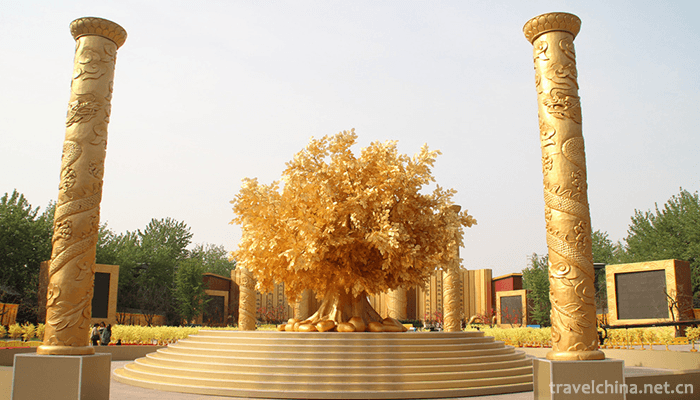
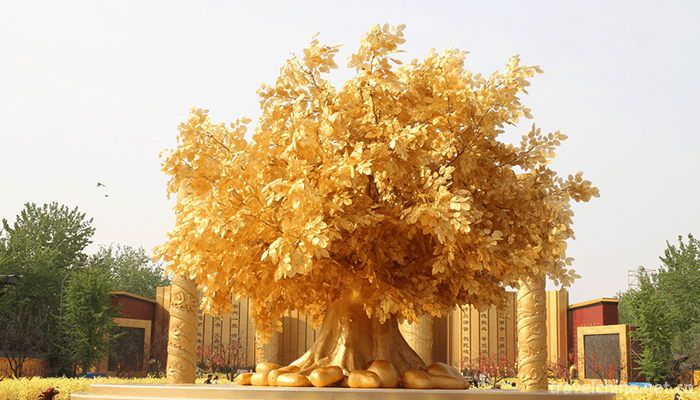
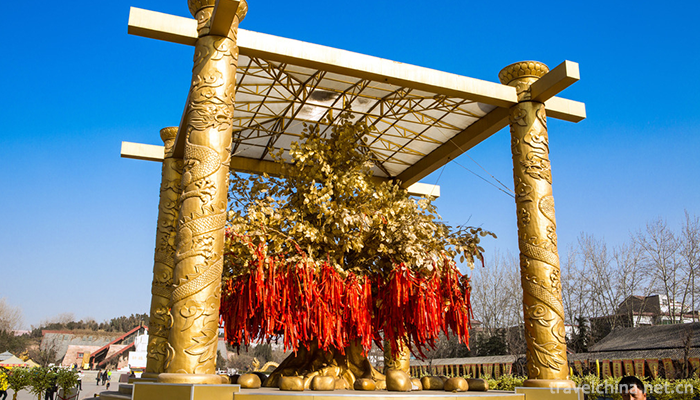
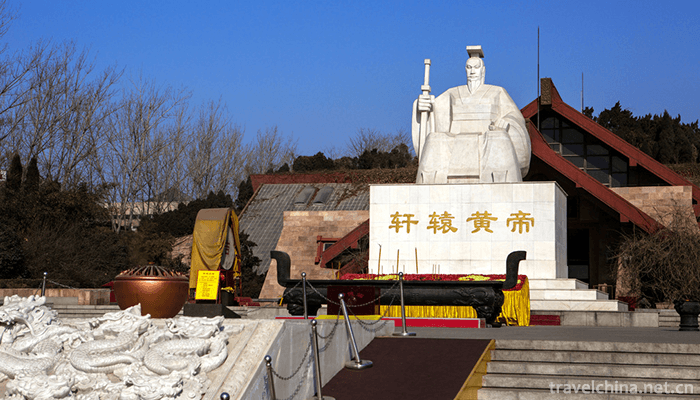
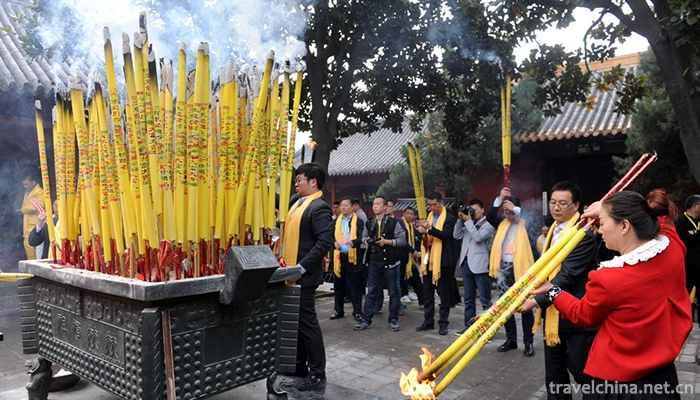
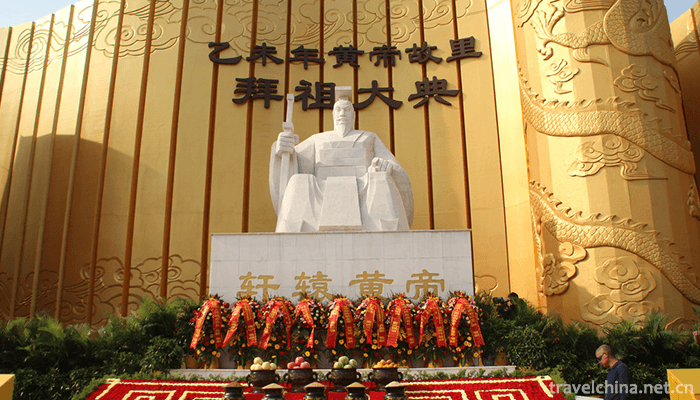
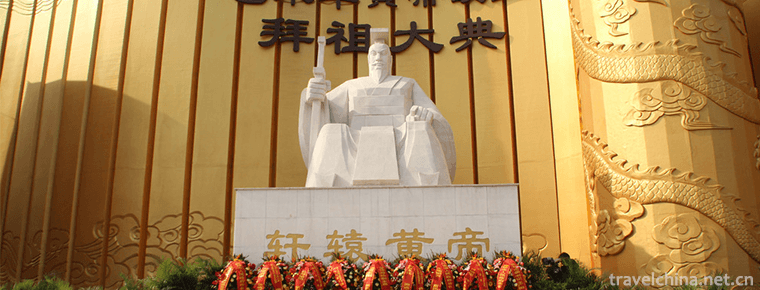
-
1.Shanghai Happy Valley
Shanghai Happy Valley is located in the Songjiang Sheshan National Tourism Resort in the southwest of Shanghai. It is 40 kilometers from the central area of Shanghai
Time 2018-12-19 -
2.Gallequin Art
Jia Liqin is made by Jia Xiwang of Jia Liguo, who imitates Chinese Han Zheng. The shape is similar to that of Zheng, and it is also a string and a pillar. There are twenty-one strings in the current G
Time 2019-04-30 -
3.Stories of Marine Animals
Marine animal stories are mainly handed down orally. The traditional folklore stories circulated in the islands for a long time have been formed and disseminated in Dongtou
Time 2019-05-02 -
4.Hu Yiyang Legend
Hu Yiyang (about 1639-1718) is a good prime minister. He is a native of Liuting Village, Renhua Township, Moxian County (now Liuting Street, Chengyang District, Qingdao City).
Time 2019-05-03 -
5.Soil alkali firing technology
On June 7, 2008, the soil-alkali firing system was approved by the State Council and listed in the second batch of national intangible cultural heritage list.
Time 2019-06-23 -
6.Chengdu University
Chengdu University, established in 1978 with the approval of the Ministry of Education, is a comprehensive University jointly built by Sichuan Province and Chengdu City. It is a key comprehensive univ
Time 2019-08-31 -
7.Beijing Institute Of Graphic Communication
Beijing Printing College is a full-time general higher education institution established by the Beijing Municipal People's Government and the former General Administration of Press and Publication. Th
Time 2019-09-22 -
8.Jianshan natural scenic spot
Jianshan scenic spot, located in the west gate of Zigong, Yandu city and rongbian town of Ziliujing District, is a provincial-level natural scenic area in Sichuan Province.
Time 2020-10-15 -
9.Yibin white tower
Baita (also known as Dongyan pagoda) is located in Baita Mountain Scenic Area of Yibin Lingang Economic and Technological Development Zone. It was built in 1569, the third year of emperor muzong's reign in the Ming Dynasty.
Time 2020-10-16 -
10.Collection value of Chinese embroidery
Mr. Chen, a fan of antique collection, bought a silk embroidery at Fuzhou flea market for more than 10000 yuan 19 years ago, which is worth at least 300000 yuan by 2008. This embroidery, about 1.8 meters long, has a dark red background, with butterfly
Time 2020-12-12 -
11.Panzhihua in the Sui Dynasty to Yuan Dynasty
At the beginning of Sui Dynasty, Yanzhou was still set up, which was renamed Xining Prefecture and Guazhou Prefecture, and became Yueyi county again. The five counties of Yanzhou established by the Northern Zhou Dynasty were abolished, and the other five counties were subordinate
Time 2020-12-14 -
12.The position of Panzhihua
Panzhihua City is located at the junction of Sichuan and Yunnan in Southwest China, 26 ° 05 ′ - 27 ° 21 ′ N and 101 ° 08 ′ - 102 ° 15 ′ E. Jinsha River and Yalong River meet here. It borders Huili, Dechang and Yanyuan counties of Liangshan Yi Autonomous Prefecture
Time 2020-12-14